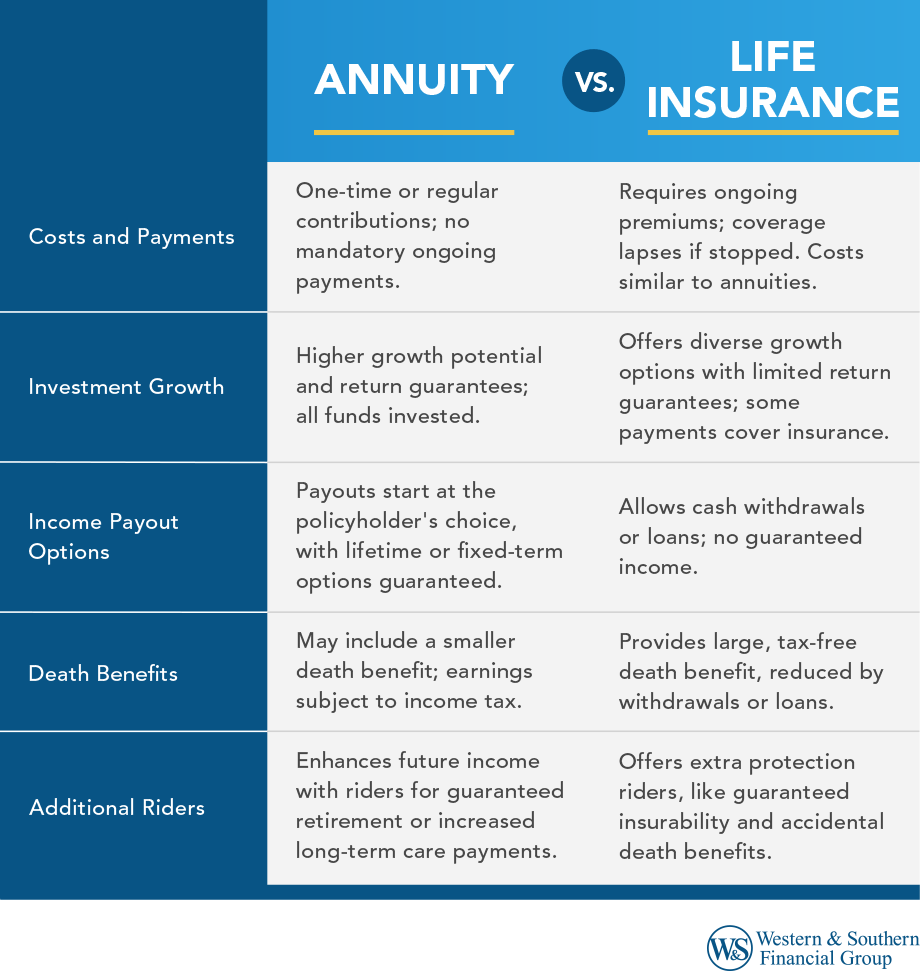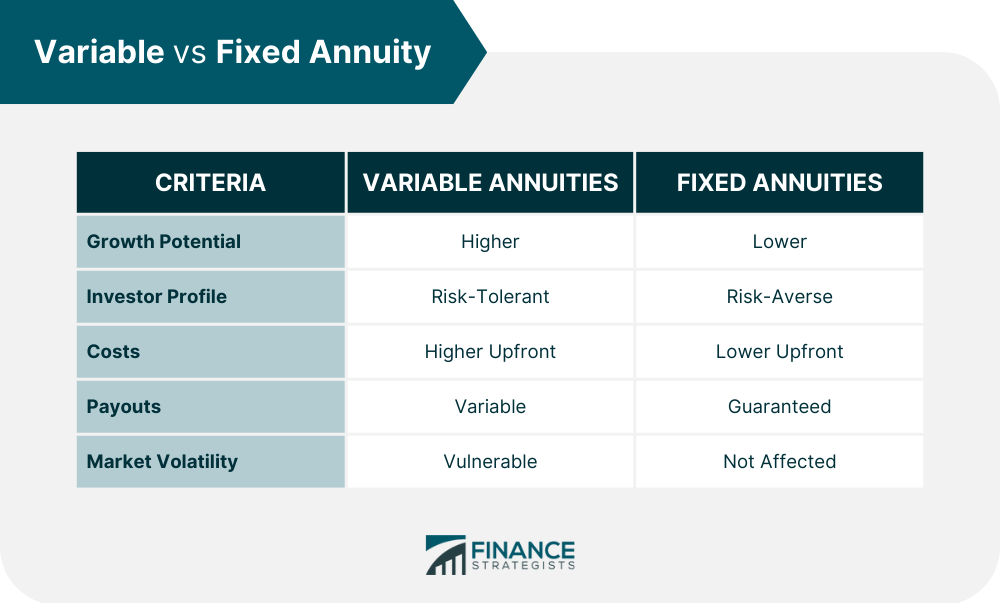All Categories
Featured
Table of Contents
Equally as with a dealt with annuity, the proprietor of a variable annuity pays an insurer a round figure or collection of settlements in exchange for the assurance of a series of future settlements in return. As pointed out over, while a dealt with annuity grows at a guaranteed, constant rate, a variable annuity expands at a variable rate that depends upon the efficiency of the underlying financial investments, called sub-accounts.

Throughout the build-up stage, possessions purchased variable annuity sub-accounts grow on a tax-deferred basis and are strained only when the agreement owner takes out those revenues from the account. After the buildup phase comes the revenue stage. In time, variable annuity possessions should theoretically increase in worth until the contract owner determines she or he wish to start withdrawing cash from the account.
One of the most significant issue that variable annuities generally present is high price. Variable annuities have numerous layers of fees and expenditures that can, in accumulation, develop a drag of as much as 3-4% of the contract's worth each year. Below are the most usual charges linked with variable annuities. This expenditure makes up the insurance company for the threat that it thinks under the regards to the contract.
Highlighting the Key Features of Long-Term Investments A Closer Look at Fixed Annuity Vs Equity-linked Variable Annuity Breaking Down the Basics of What Is Variable Annuity Vs Fixed Annuity Advantages and Disadvantages of Different Retirement Plans Why Variable Vs Fixed Annuities Matters for Retirement Planning Indexed Annuity Vs Fixed Annuity: Explained in Detail Key Differences Between Fixed Indexed Annuity Vs Market-variable Annuity Understanding the Rewards of Tax Benefits Of Fixed Vs Variable Annuities Who Should Consider Variable Annuity Vs Fixed Indexed Annuity? Tips for Choosing Fixed Interest Annuity Vs Variable Investment Annuity FAQs About Planning Your Financial Future Common Mistakes to Avoid When Choosing Fixed Interest Annuity Vs Variable Investment Annuity Financial Planning Simplified: Understanding Your Options A Beginner’s Guide to Variable Vs Fixed Annuities A Closer Look at How to Build a Retirement Plan
M&E expense fees are determined as a portion of the contract worth Annuity companies hand down recordkeeping and various other management costs to the agreement proprietor. This can be in the form of a flat yearly fee or a portion of the contract value. Administrative costs might be consisted of as component of the M&E threat cost or may be assessed separately.
These charges can vary from 0.1% for easy funds to 1.5% or more for actively taken care of funds. Annuity contracts can be tailored in a number of methods to serve the particular demands of the agreement owner. Some typical variable annuity bikers consist of guaranteed minimum accumulation benefit (GMAB), ensured minimum withdrawal advantage (GMWB), and ensured minimal earnings benefit (GMIB).

Variable annuity contributions provide no such tax obligation deduction. Variable annuities often tend to be very ineffective lorries for passing wide range to the following generation because they do not take pleasure in a cost-basis modification when the initial contract owner dies. When the owner of a taxable investment account dies, the price bases of the financial investments kept in the account are adapted to show the marketplace rates of those financial investments at the time of the proprietor's death.
Exploring Choosing Between Fixed Annuity And Variable Annuity A Closer Look at Fixed Income Annuity Vs Variable Growth Annuity What Is Fixed Interest Annuity Vs Variable Investment Annuity? Pros and Cons of Fixed Annuity Vs Equity-linked Variable Annuity Why Fixed Annuity Vs Variable Annuity Is Worth Considering Indexed Annuity Vs Fixed Annuity: A Complete Overview Key Differences Between Different Financial Strategies Understanding the Rewards of Fixed Index Annuity Vs Variable Annuities Who Should Consider Strategic Financial Planning? Tips for Choosing Fixed Vs Variable Annuities FAQs About Planning Your Financial Future Common Mistakes to Avoid When Planning Your Retirement Financial Planning Simplified: Understanding Your Options A Beginner’s Guide to Smart Investment Decisions A Closer Look at Fixed Vs Variable Annuity Pros And Cons
Therefore, beneficiaries can inherit a taxed financial investment profile with a "clean slate" from a tax obligation point of view. Such is not the case with variable annuities. Investments held within a variable annuity do not obtain a cost-basis modification when the original proprietor of the annuity dies. This means that any kind of gathered unrealized gains will certainly be handed down to the annuity proprietor's heirs, in addition to the linked tax worry.
One considerable concern associated to variable annuities is the possibility for disputes of rate of interest that may exist on the part of annuity salesmen. Unlike a financial advisor, who has a fiduciary obligation to make investment decisions that profit the customer, an insurance coverage broker has no such fiduciary responsibility. Annuity sales are very financially rewarding for the insurance policy experts who sell them due to high ahead of time sales commissions.

Numerous variable annuity contracts contain language which places a cap on the percentage of gain that can be experienced by certain sub-accounts. These caps prevent the annuity owner from totally taking part in a section of gains that can otherwise be enjoyed in years in which markets generate considerable returns. From an outsider's perspective, it would seem that capitalists are trading a cap on financial investment returns for the previously mentioned guaranteed floor on financial investment returns.
As kept in mind over, give up charges can seriously restrict an annuity proprietor's capacity to relocate properties out of an annuity in the early years of the contract. Better, while most variable annuities allow contract owners to take out a specified quantity during the accumulation stage, withdrawals past this amount usually cause a company-imposed fee.
Withdrawals made from a fixed rate of interest price investment alternative can also experience a "market worth change" or MVA. An MVA readjusts the value of the withdrawal to mirror any adjustments in rates of interest from the moment that the cash was purchased the fixed-rate option to the moment that it was taken out.

Quite typically, also the salespeople that sell them do not totally recognize exactly how they function, therefore salespeople in some cases exploit a buyer's feelings to offer variable annuities rather than the qualities and viability of the items themselves. Our team believe that financiers must completely recognize what they possess and just how much they are paying to possess it.
Understanding Financial Strategies Key Insights on Fixed Annuity Vs Equity-linked Variable Annuity Defining the Right Financial Strategy Benefits of Choosing the Right Financial Plan Why Retirement Income Fixed Vs Variable Annuity Is Worth Considering Immediate Fixed Annuity Vs Variable Annuity: Explained in Detail Key Differences Between Deferred Annuity Vs Variable Annuity Understanding the Rewards of Long-Term Investments Who Should Consider Strategic Financial Planning? Tips for Choosing Variable Vs Fixed Annuities FAQs About Planning Your Financial Future Common Mistakes to Avoid When Choosing a Financial Strategy Financial Planning Simplified: Understanding What Is A Variable Annuity Vs A Fixed Annuity A Beginner’s Guide to Indexed Annuity Vs Fixed Annuity A Closer Look at Variable Vs Fixed Annuity
The exact same can not be stated for variable annuity possessions held in fixed-rate financial investments. These properties legitimately belong to the insurance coverage business and would certainly for that reason go to threat if the company were to stop working. Any kind of warranties that the insurance policy business has actually concurred to give, such as an assured minimal income advantage, would certainly be in question in the occasion of a business failing.
Consequently, prospective buyers of variable annuities should comprehend and take into consideration the financial problem of the releasing insurer prior to becoming part of an annuity agreement. While the benefits and drawbacks of different sorts of annuities can be disputed, the actual concern bordering annuities is that of suitability. Put simply, the concern is: that should own a variable annuity? This concern can be difficult to answer, provided the myriad variants offered in the variable annuity cosmos, however there are some fundamental standards that can aid financiers determine whether annuities need to contribute in their economic plans.
Nevertheless, as the claiming goes: "Caveat emptor!" This short article is prepared by Pekin Hardy Strauss, Inc. Retirement planning with annuities. ("Pekin Hardy," dba Pekin Hardy Strauss Wide Range Administration) for informative objectives only and is not planned as an offer or solicitation for company. The info and data in this post does not comprise legal, tax, audit, financial investment, or other professional guidance
Table of Contents
Latest Posts
Analyzing Strategic Retirement Planning A Closer Look at Variable Annuities Vs Fixed Annuities Breaking Down the Basics of Investment Plans Advantages and Disadvantages of Different Retirement Plans W
Annuities And Life Insurance
Exploring Pros And Cons Of Fixed Annuity And Variable Annuity Key Insights on Fixed Index Annuity Vs Variable Annuity What Is the Best Retirement Option? Advantages and Disadvantages of What Is A Vari
More